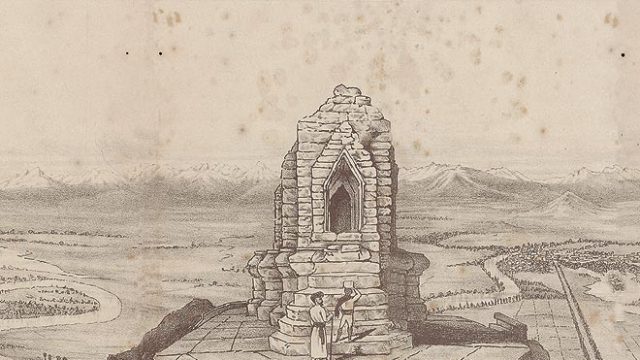On the 23rd day of June, 1859, Sir Richard Temple ascended the Takht-i-Sulaiman on a path that was barely rideable in parts. “From the terrace above I beheld the great view of Kashmir, a prospect which is certainly one of the finest I have ever seen in any country, and which I suppose must be one of the finest in the world. The view extends over the whole valley, and is bounded on all four quarters by snowy ranges,” he wrote in his very detailed journal.
The Takht-i-Sulaiman—now Shankaracharya Hill—is still the most imposing object near Srinagar, surmounted as it is by the ancient Shankaracharya Mandir. Legend has it that the temple was built in 220 BC by Ashoka’s son; that King Solomon visited the valley; the Adi Shankaracharya meditated here; and that the iconoclast Sultan Sikander spared the temple but changed its name to Sulaiman.
More recent accounts state that the superstructure was built on an earlier base by Gopaditya between 368-308 BC. But the site has always been a work in progress. In the 15th century, Zain-ul-Abedin repaired its dome after an earthquake. The black lingam was installed by Maharaja Ranbir Singh in the late 19th century. During the 1940s the Maharaja of Indore contributed electrification, adding a dazzling flashlight on top; and in the 1970s a TV tower came up on the hill’s Dal lake side and a religious trust added 599 stone steps connecting tower and temple. But the board outside still insists that the temple was built by the Pandavas.




